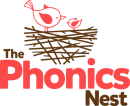Reading with Young Children
As parents we are often told, and in our heart’s we know, that reading with our children will benefit them in many, many different ways. It’s something which academics have long proven is highly beneficial to children of all ages. Those instincts are confirmed by the feeling you get when you snuggle up with your little one and read with them, it is almost a physical reaction which calms and helps parent and child bond.
So reading is something which we want to do with our child and which we know will benefit them, but how exactly? What should I be reading? When and for how long? What happens when my child gets a bit older and can read to themselves? These are just some of the questions (and many more) we will try to answer in this section for you!
So here goes…..
How does reading with adults benefit young children?
There are so many reasons to read with young children and different people will have their own reasons, but here are our top 10.
- Reading quality picture books with young children begins a child’s love of reading, stories and books.
- Listening to the spoken language an adult says as they read builds vital connections in the brain which technology does not recreate.
- Books open up a whole new world. Children learn about the wider world from books. Picture books take them on adventures, encourage imagination and build vocabulary. Information books provide spark curiosity and encourage questioning.
- Children learn about how sentences are structured, tenses and what sounds grammatically correct.
- Reading with children encourages the bound between the adult and the child. I still remember my father reading me The Hobbit and grandfather’s voice as he read Grimm’s fairy tales to me, these moments create lasting memories for children.
- Reading with children builds their concentration, listening and questioning skills which are all key when they start school.
- Children who are confident readers broadly achieve better across the school curriculum.
- Reading builds empathy and emotional intelligence. Children learn to think about how others are feeling as they follow the adventures of their favourite characters. This gives them the vocabulary and experiences to help verbalise their own thoughts and feelings.
- Picture books give children ideas to develop their own play. Children use first hand experiences to build their play. As they read a wider range of books they will begin to introduce the characters and language into their play. This deepens their understanding to stories, as they retell parts in their own words and gives them a chance to experiment with new vocabulary. All of this ‘story play’ forms a firm foundation for writing when they are older.
- Reading is fun! Everything else aside, reading is wonderful!
How often should I read with my child?
Why reading at bedtime?
How do I share a book with my child?
At what age should I stop reading to my child?
If you have a child who is now able to read freely themselves, should you still keep reading to them? Absolutely, yes! You can do both. Hear your child read either their school book or a book or their choice and encourage them to explore the book, not just say the words out loud.
Then you can read to them, it could just be half a chapter a day. Reading books to them which are above their own reading level will expose them to higher levels of vocabulary and more complex story structures and characters, developing their comprehension skills.
Continuing to read to older children is also important for those children who themselves find reading tricky. An adult reading to them not only continues to develop their comprehension skills, but also allows them to enjoy books and stories, whilst removing the pressure to read themselves.
Another way of exposing your child to high level texts and adults reading with expression is to use CDs and audio books. Old CD players and CDs can be picked up cheaply online and can be useful to settle young children at night. You can download audio books and bluetooth them to your child’s speakers if you want to avoid them having devices in their bedrooms at night. Many libraries also have a children’s audiobook section.
Which books should I read with my child?
There are many wonderful picture books and chapter books available to choose from. As with anything they are of varying quality and the more you read to your child the more you will begin to pick out favourites! Children are often attracted to books with their favourite cartoon characters on and whilst there is nothing wrong with these books as such, the stories are often repetitive. You could read one and then introduce something new. As a general rule if your thoughts are drifting off as you are reading, it’s likely your child’s are too!
The library is a great place to start exploring books, look at the covers and see what your child is drawn to. To get you going we here are some suggested children’s classics to start with!
- ‘Shark in the Park’ by Nick Sharratt
- ‘The Gruffalo’ by Julia Donladson
- ‘Owl Babies’ by Martin Waddell
- ‘Each, Peach, Pear, Plum’ by the Ahlbergs
- ‘We’re Going on a Bear Hunt,’ by Michael Rosen and Helen Oxenbury
- ‘Dear Zoo,’ by Rod Campbell
- ‘Whatever Next?’ by Jill Murphy
- ‘Blue Chameleon,’ by Emily Gravett
- ‘The Way Back Home’ by Oliver Jeffers
- ‘The Very Hungry Caterpillar’ by Eric Carle
These authors have all written many wonderful books, all worth looking out for! Enjoy!
